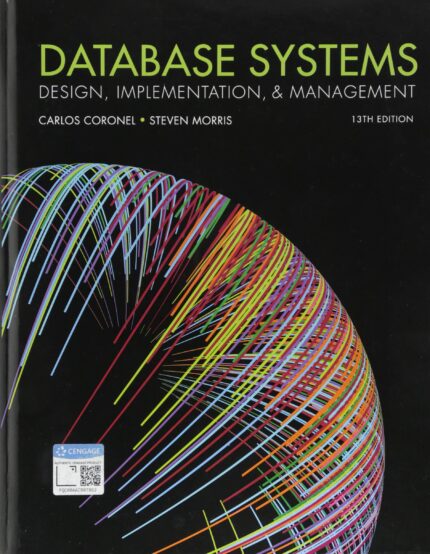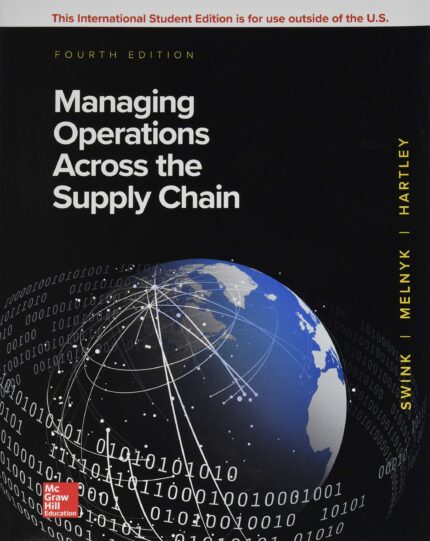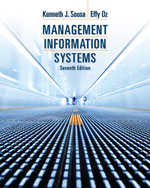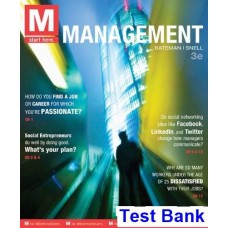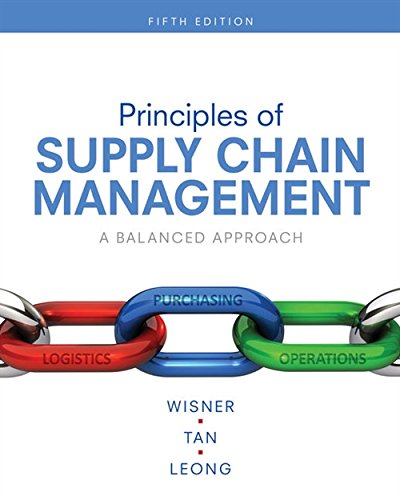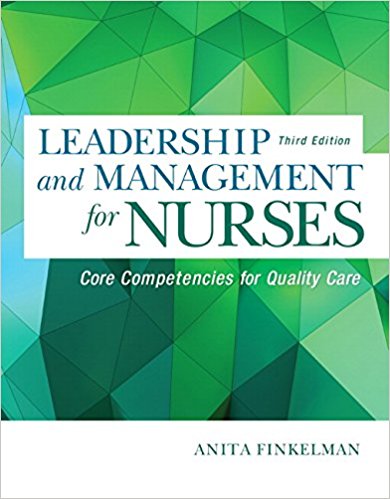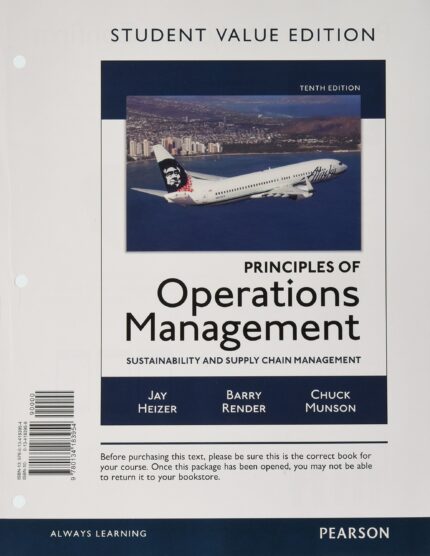Solution Manual for Operations Management 2nd Edition by Cachon
Solution Manual for Operations Management 2nd Edition by Cachon
Operations Management 2nd Edition by Cachon – Test Bank
Operations Management 2nd Edition
Operations Management
Chapter 1 – Teaching Plan
Introduction to Operations Management
Specific Learning objectives
LO1-1: Identify the drivers of customer utility
LO1-2: Explaininefficiencies and determine if a firm is on the efficient frontier
LO1-3: Explain the three system inhibitors
LO1-4: Explain what work in operations management looks like
LO1-5: Articulate the key operational decisions a firm needs to make to match supply with demand
What Students Learn in this Chapter
This chapter is the beginning of the book, and most likely the corresponding session is the first session in the student’s first exposure to operations management. The goal of the session is for students to gain some appreciation of the type of operational decisions that a business has to make and to provide them some idea of what it will take to make these decisions well.
To achieve this goal, we like to start with a perspective the student is familiar with. In most undergraduate settings, students will have little or no work experience. So, rather than starting with the perspective of the business, we find it more engaging to start with the perspective of the consumer. Faculty and students alike, all of us have been in the role of the customer in consumer-facing industries, such as restaurants, travel, healthcare, entertainment, or education. We suggest using the example of restaurants. Even if students have work experience, a common experience/example is helpful for discussion and all of us have been in some form of a restaurant.
The book chapter takes the example of “where do you want to go for lunch today?” to establish the different dimensions driving customer utility. Once we understand what consumers value, we can start talking about the dimensions of operational performance. Students will see that there are multiple dimensions of operational performance. Some operations focus on responsiveness, some on quality, some on efficiency, etc. Unlike the case of finance, where we all agree that more profits are better than fewer profits, students will appreciate that there exist trade-offs among the operational dimensions of performance. Subway is operationally not better or worse than a five-star restaurant. It simply has a different strategy.
The presence of trade-off then sets up the efficient frontier framework. Some firms are better at multiple things, others are worse. Typically, students have services that they like a lot (e.g. Starbucks or Chipotle) and oftentimes, those are services that are also financially successful. This allows for a discussion of what makes these services successful, which allows the faculty to introduce concepts such as waste, variability, and inflexibility.
Relationship to other Chapters
This chapter is related to:
Since this is the first chapter, it obviously does not build on other chapters.
This chapter is the foundation for:
The idea of the efficient frontier and the three system inhibitors is coming up throughout the book/the course. Introducing them on the first day of class is helpful, though not required.
Proposed Time Line
Any time line will depend on the context of teaching, including the class size, the choice of exercise or case, the level of prior knowledge of the students, and the teaching style of the faculty. We have used the following time line for various audiences. This includes academic settings (business students), but also professional development settings with participants that learnt this material not to prepare for a test but to advance their careers.
0:00 Opening exercise (Mortgage exercise)
0:20 Dimensions of performance
0:30 The efficient frontier/Pareto dominance
0:40 The three system inhibitors
1:00 Course overview and course logistics
Preparation before class
Set up exercise if you plan to use one.
If mortgage exercise is used, send out an email to students ahead of time, announcing that (a) on time arrival is critical for the exercise (b) they should not touch any paper on the tables.
If you plan to discuss the restaurant example, it might be helpful to do a quick Google news search on the big restaurant chains to have some current updates/examples.


